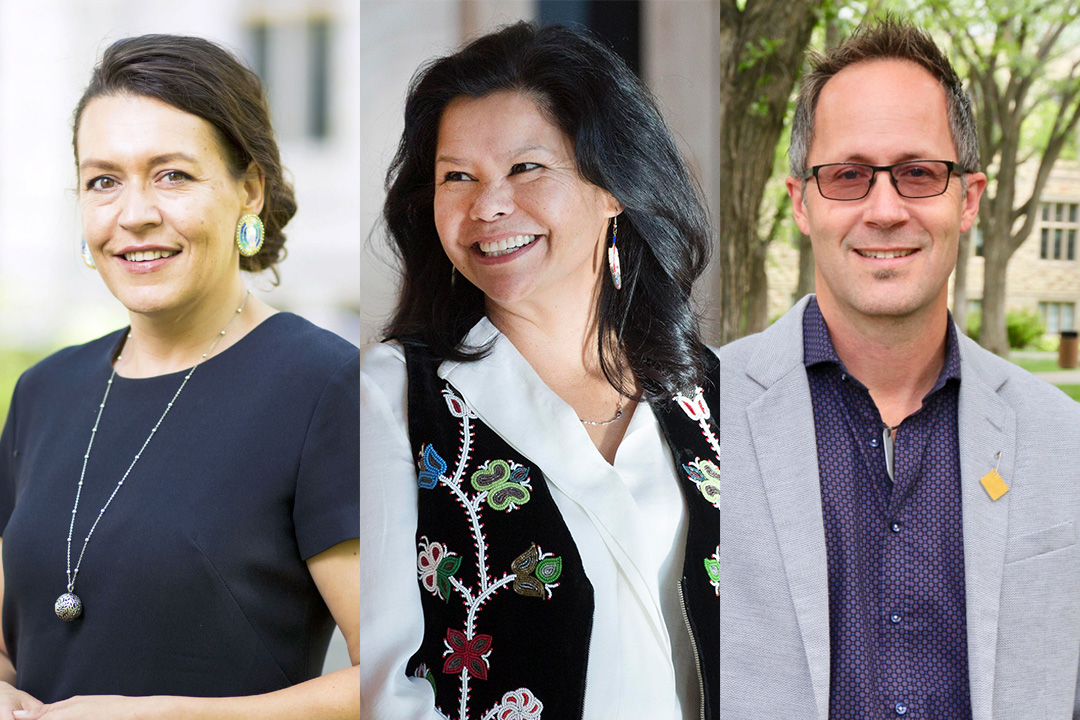
Land acknowledgement enhances campus culture
“As we gather here today, we acknowledge we are on Treaty 6 Territory and the Homeland of the Métis. We pay our respect to the First Nations and Métis ancestors of this place and reaffirm our relationship with one another.”
By Shannon CossetteFour years ago, the University of Saskatchewan (USask) officially introduced a new Indigenous land acknowledgement to open public speaking engagements, events and meetings.
The greeting was formalized after the Truth and Reconciliation Commission of Canada’s final report was released, urging governments, institutions and organizations to engage in the process of redressing the legacy of residential schools by responding to the TRC’s 94 Calls to Action. At USask, the land acknowledgement quickly became one small but meaningful way to begin that process.
“Acknowledging the land, and all the life within it, in various ways is something that First Nations, Inuit and Métis people have done for generations,” said Dr. Jacqueline Ottmann (PhD), the vice-provost of Indigenous Engagement at USask. “Expressions of gratitude and respect for the land, was practiced long before European settlers arrived on Turtle Island (North America). Indigenous people have had an intimate relationship and knowledge of these places and spaces.
“Land acknowledgement pays respect to those from our past and also to those who will experience our territories in generations to come. Land acknowledgments should be respectful, be reverent to the Creator, recognize the need for the right relationship, be communicated with humility and gratitude.”
USask’s land acknowledgement statement was officially approved at University Council on June 18, 2015, presented by project leaders including Candace Wasacase-Lafferty, senior director, Office of the Vice-Provost Indigenous Engagement.
“It was important to everyone that we emphasize that the land acknowledgements be delivered in a respectful and insightful manner,” said Wasacase-Lafferty. “This statement was certainly a good way to begin.”
University officials engaged in extensive consultation with Elders, Indigenous and non-Indigenous faculty, students, staff, and community members, on the language and intention behind the statement. The intent was that the message be respectful and acknowledge the land itself, and the ancestral lands of the people who have resided in the territory for centuries.
“It is more than just about the land that we belong to, it is also about our relationship to the land and sky, to the plants and animals, to this place that has made us who we are today,” said Dr. Stryker Calvez (PhD), manager of Indigenous Education Initiatives at the Gwenna Moss Centre for Teaching and Learning at USask. “It is our spiritual connection to a place that has nurtured and shaped our languages, stories, beliefs and ways of knowing. Land acknowledgements don’t just recognize the past and the people who lived here before now, these statements recognize the spirit of the place and our relationship to it, like the relationships we have with our parents and families.
“It is also about the treaties we signed and scrip that we were offered. The oral stories describing the treaty and scrip processes provide our account of the agreement to share our and resources, but not to absolute surrender the land.”
Today, a new emphasis is being placed on the importance of treaty, and land- and place-based education across Canada. Ottmann said this presents an opportunity for the sharing of knowledge and experience of treaties by Indigenous Elders, Traditional Knowledge Keepers and other experts.
“Land acknowledgement is a step in the right direction, and the next step is educating non-Indigenous and Indigenous people of its significance and some of the work that has already happened in this area,” she said.

